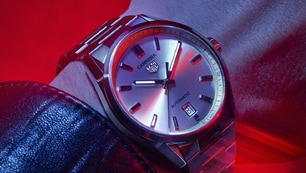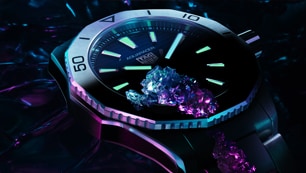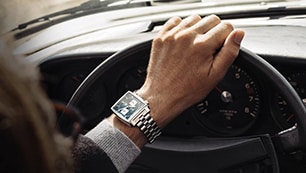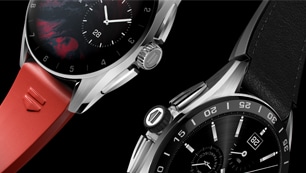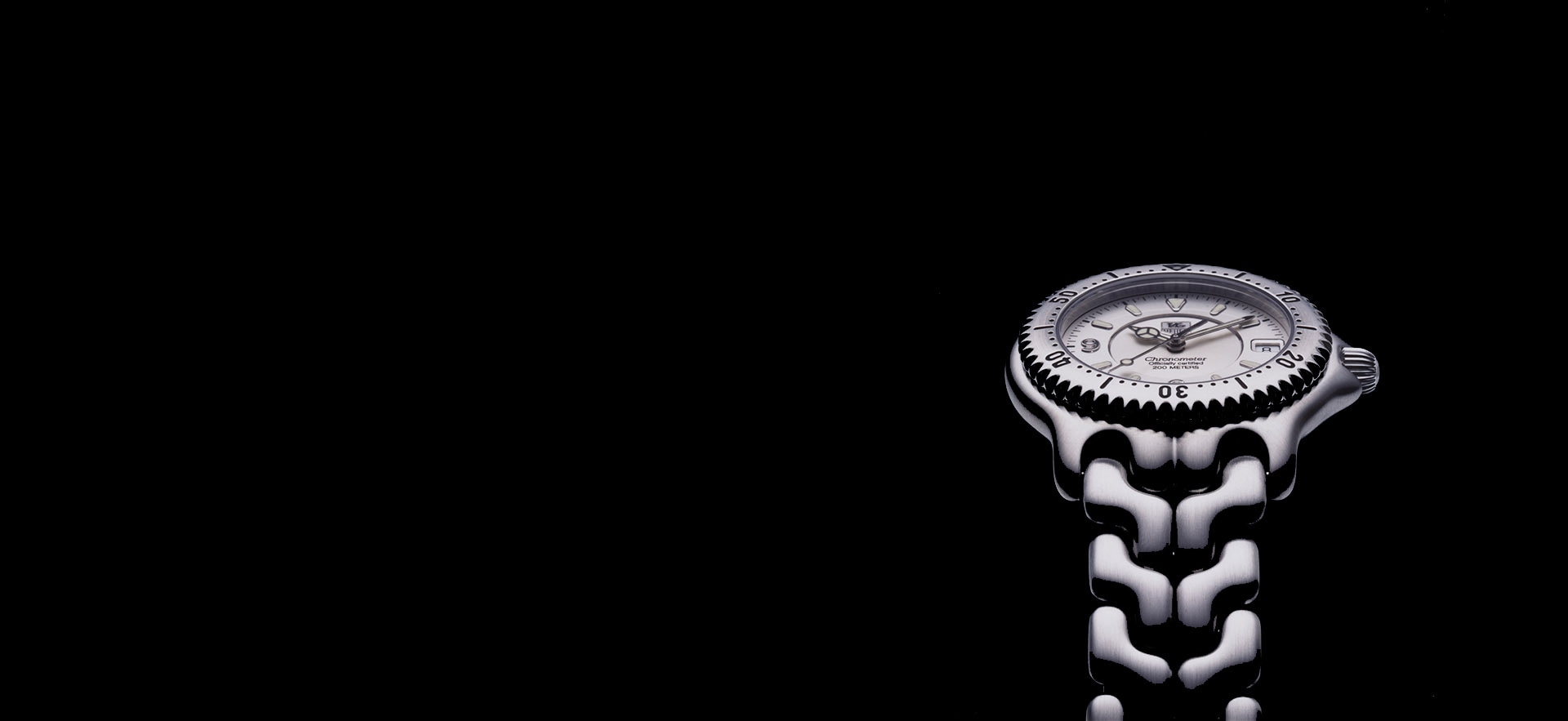SUMMARY
Heuer’s experience in dive watches began in 1978, with the relatively simple 1000 Series of watches. It was the dive watches that allowed Heuer to survive difficult industry and global economic conditions, with the continuation of the company ensured when Techniques d’Avant Garde acquired Heuer on January 1, 1986. With this came the capital and leadership that would position TAG Heuer to succeed through the remainder of the 20th century and move strongly into the 21st century.
As the first collection to be developed and offered by TAG Heuer, the S/el was positioned as the flagship of the TAG Heuer catalogue, demonstrating that the company’s dive watches had not only allowed the company to survive, but evolved into timepieces that now represented the very best of both “sports” and “elegance.”
Over the years, the S/el collection offered a broad range of watches and chronographs, with a variety of sizes and styles. While the bracelet itself is considered a design icon in the history of the TAG Heuer brand, the watches and chronographs offer a wide variety of features, from simple three-hand watches to the most complex analog / digital models, capable of 1/100 second timing. More than representing the evolution of the dive watch and the survival of the company, the S/el collection would soon become the “Link”, a collection that continues as a vital part of the TAG Heuer catalog, to this day.
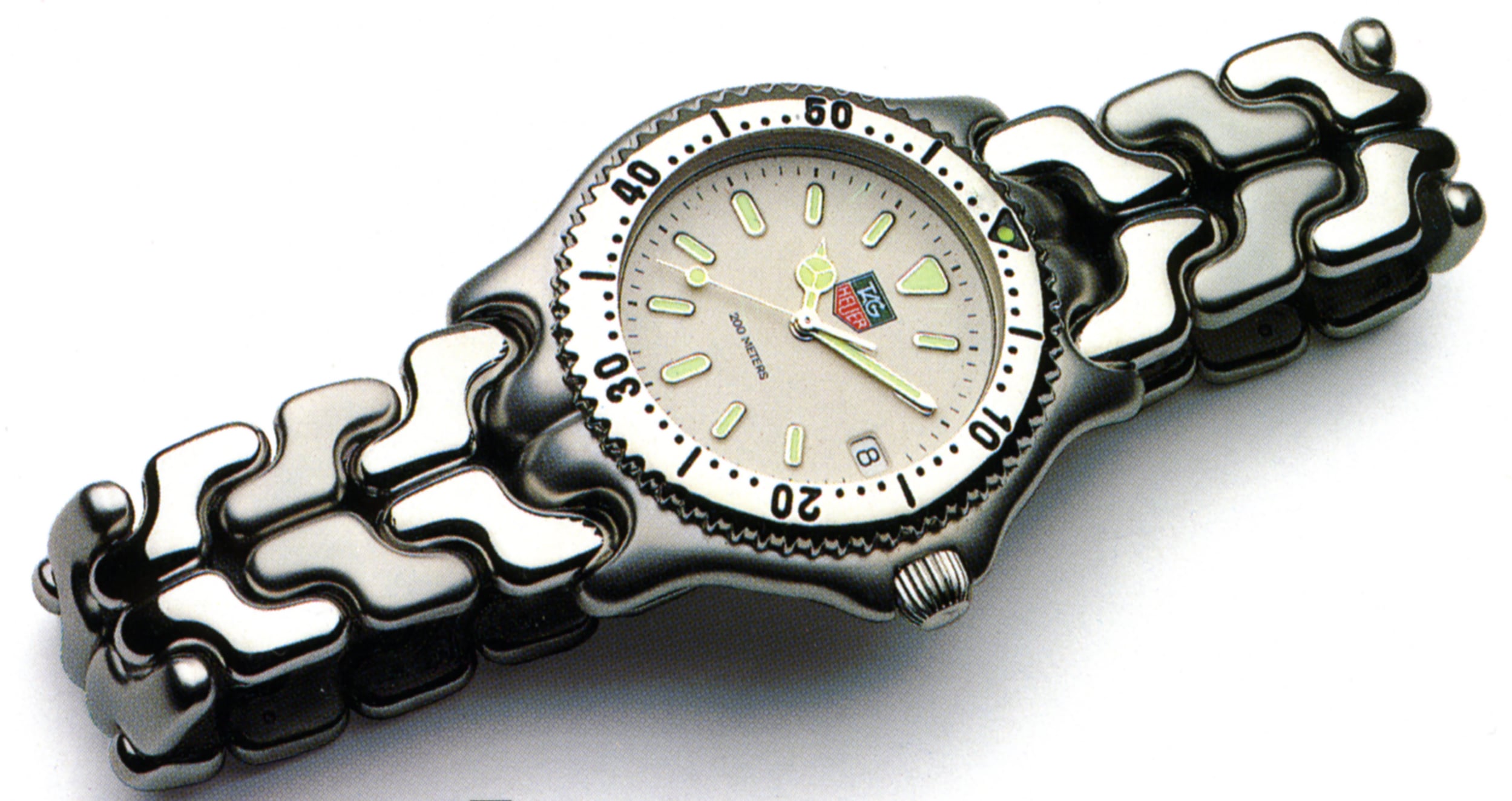
In 1982, Jack Heuer, the fourth generation head of the 120-year-old family business, sold the company to a consortium that included Nouvelle Lemania, but their ownership may be viewed as transitional. On January 1, 1986, Techniques d’Avant Garde (“TAG”) purchased Heuer, and with that we have the origins of the TAG Heuer name and logo that continue to this day. TAG Heuer released the “Formula 1” collection in March 1986, but the S/el (Sports / elegance) collection – released in 1987 – represents the first collection developed and introduced under the TAG Heuer banner.
The S/el collection would achieve great success for TAG Heuer through the 1990s, being renamed the “Link” collection in 1999. Accordingly, the S/el stands as the first collection that would be debuted by TAG Heuer that continues in the catalog to this date.
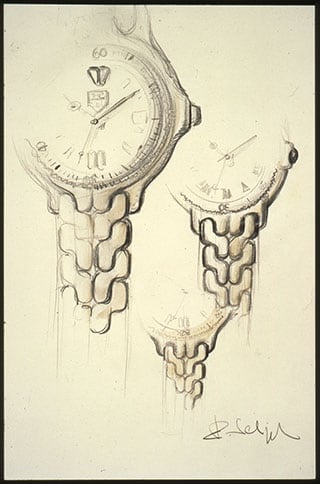
ORIGINS OF THE S/EL
The name “S/el” derives from “Sports Elegance” and was designed by the same man who earlier drew the 2000 series for Heuer, Eddie Schopfer.
The collection was one of the first series of watches to be designed explicitly incorporating the “Six Features” that came to define TAG Heuer dive watches in the 1990s:
- Water resistant to 200 meters
- Screw-down crown
- Double safety clasp on the bracelet
- Unidirectional rotating bezel
- Sapphire crystal
- Luminous markings on the dial, hands and bezel
The incorporation of these “Six Features” gave TAG Heuer a distinctive look for its watches, with the same features being incorporated into the 4000 Series collection, introduced in 1990.
TAG Heuer’s strategy with the new S/el collection was to take the range of dive watches upmarket, with the collection being positioned above TAG Heuer’s mainstay models of the day – the 1000 and 2000 Series dive watches and the colorful Formula 1 collection. The idea behind the S/el collection was that it was “designed to be worn with a diving suit as well as a dinner jacket” and until the arrival of the 6000 Series in the mid-1990s, the S/el was the flagship of the TAG Heuer range.

DESIGN
While many elements of the first S/el models followed the style of previous dive watches, the S/el collection had one defining feature that was instantly recognizable -- the bracelet. Indeed, the watch could be identified by a single link of its bracelet. Each “link” was comprised of two curved ingots, which also made the bracelet exceptionally comfortable.
In a sense, the case of the S/el was specifically designed to mate with the bracelet, with the links themselves serving as end-pieces, and the cases of the early models wouldn’t accept a traditional leather strap. The S/el was a unique piece of integrated design, with the watch case and bracelet working together perfectly.
The rest of the S/el watch continued this soft, organic look, providing a contrast to the more squared edges of the existing TAG Heuer range of the time. The bezel had a saw-tooth finish, while the case and bracelet were available in a range of finishes, with the plated gold/ stainless steel combination being the signature look of the era.
The dial and hands were relatively conventional, using the “Mercedes” hands offered throughout the rest of the TAG Heuer range.
TAG HEUER S/EL RANGE
The S/el was in the TAG Heuer range from 1987 through 1999 and during this twelve year period there were seven major model lines:
- S/el Quartz Watch,
- S/el Quartz Chronograph
- S/el Digital Chronograph
- S/el Automatic Watch
- S/el Automatic Chronometer
- S/el Automatic Chronograph
- S/el Leather series.

S/EL QUARTZ WATCH
The S/el was launched as a quartz-only range, with the three-hand watch taking center stage. Consistent with TAG Heuer’s approach at the time, there were three sizes offered -- Men’s, Mid-size and Ladies -- and various dial options, including a Roman numeral option. There were stainless steel cases, bi-metallic stainless steel and gold-plated and rare black-plated and gold models. The leather strap that was available for the S/el had a special link at the end, to notch into the uniquely-shaped case.
Consistent with its position as a “premium” watch in the TAG Heuer catalog, the S/el was the first TAG Heuer watch to make use extensive of contrasting finishes. For example, the white dial watch has a sand-blasted steel case with a polished bezel and contrasting polished and matte links.
Early dials were marked “200 meters”, and around 1990 the dials were updated slightly, adding “Professional” to the dial. Interestingly, the name of the collection “S/el” never appeared on the dial of any of the watches, with the unique bracelets serving to identify the watches in the collection.
The quartz watch range was updated in 1995/6 with the two-level dial used on the automatic range, as shown below.
Indeed, this was one of the few changes to the S/el watch during its life, with the three-hand watch remaining as part of the S/el range all the way through to 1999.

S/EL QUARTZ CHRONOGRAPH
The quartz chronograph was added to the S/el range in 1990 and offered 1/10th second precision (with the recorder at the 2 o’clock position). The layout was dictated by the ETA 251.262 movement, which had this “2-6-10” placement, with the top two registers sitting higher than usual, above the midline of the dial. The inner flange has a tachymeter scale, giving the chronograph models more visual depth than the three-hand watch variants.
All chronograph models have “Professional” on the dial and a “double baguette” marker at 12 o’clock.
The quartz chronograph was updated in 1997, with metal rings placed around each sub-dial and a triangle replacing the double baguettes at 12 o’clock. These second generation S/el quartz chronographs tend to be rare, as they were produced for only a brief period.

S/EL DIGITAL QUARTZ CHRONOGRAPH
In the 1970s and 80s, Heuer had produced many chronographs that offered both digital and analog features. In 1990, TAG Heuer extended this approach to the S/el, adding two small digital windows at 4 and 8 o’clock. The S/el Digital Quartz chronograph offered 1/100th second precision and this model was the favourite watch of Formula One champion Ayrton Senna, who wore a bi-metal model with an egg-shell-colored dial (reference S. 25706C).
The dial of these models was unique, with a 1/100 scale added to the dial, being read with a hand added to the center pinion. The digital chronograph was discontinued around 1998.
S/EL AUTOMATIC WATCH
An automatic watch was added to the S/el range in 1991, a year when TAG Heuer began to reintroduced mechanical options back into its range. TAG Heuer also introduced a new design for the dial -- a stamped dial with a two-level design. This was initially offered only on the automatic range, but was extended to quartz models over time.The automatic range was phased out around 1995, effectively replaced by the S/el Leather models.
S/EL CHRONOMETER
At the same time as the automatic watch was launched, TAG Heuer also offered a Chronometer version of the S/el, with the same two-level stamped dial offered as an option. The Chronometers are individually numbered and stamped on the caseback, represented the top performing models in the S/el collection.
The look was refined in 1997, when the second generation S/el Chronometer was launched, with all dial colours getting the two-level dial, a monochrome applied TAG Heuer logo, numerals at 6 and 9 o’clock and a white surround on the date window. New dial colors were also added, including a deep blue (reference WG 5114) and black (WG 5211).
The S/el Chronometer was included in the S/el collection from its launch in 1991 through to the time when the S/el became the “Link” collection in 1999.
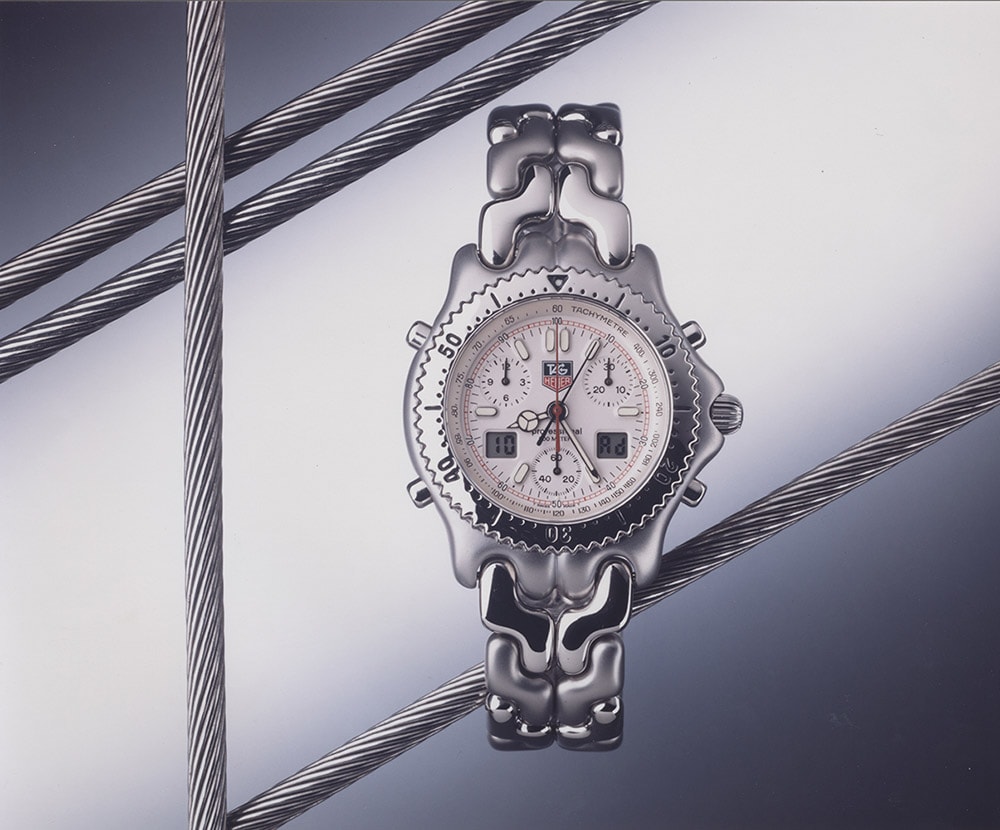
S/EL LEATHER
The defining feature of the S/el collection was the unique style of bracelet used on the watches, and the case itself was shaped to couple with this bracelet. For those who preferred a leather strap, TAG Heuer offered a specially-designed strap which incorporated links at the end, to fit the unique case of the S/el.
In 1994/5 TAG Heuer launched the S/el Leather range, with the shape of the case being changed to include more traditional lugs, so that the watch would accept a standard leather strap. The S/el Leather range was available with both mechanical and quartz movements, and TAG Heuer offered straps for these watches in a broad range of bright colors.
In effect, the S/el Leather models replaced the standard S/el automatic watches. The S/el Leather was produced until 1998, when the leather bracelets returned to the single-link style of the earlier S/els.
S/EL AUTOMATIC CHRONOGRAPH
TAG Heuer’s mechanical revival continued in 1996 when an automatic model of the S/el chronograph was introduced. Most of these models have a two-part dial with “azurage” finish in both the center of the dial and inside the three registers. Like the second-generation Chronometer, these watches feature an applied TAG Heuer logo
MOVEMENTS
While a variety of movements were used across the range, especially with the smaller women’s models, the key movements used in the men’s range are as follows:
Quartz
– Watch: ETA 955.112
– Chronograph: ETA 251.262
– Analogue/ Digital Chronograph: ETA 251.265
Mechanical
– Automatic Chronometer: ETA 2892 (today called the Calibre 7)
– Automatic Chronograph: ETA 7750 (today called the Calibre 16)
S/EL SPECIAL EDITIONS
As the flagship model in the TAG Heuer catalog from the late 1980s into the 1990s, it is natural that the S/el collection was favored for special editions, for teams involved in Formula One and other motorsports, as well as yacht racing.
A Special Edition of the S/el Chronograph made for West McLaren Mercedes used an automatic movement and has black registers contrasting with the white dial. A tachymeter scale on the black inner bezel is marked in red and white numerals.

In 1998, TAG Heuer produced another Special Edition for McLaren, a quartz Chronograph (reference CG1117). There are two versions of this watch: one with the signature of Ron Dennis, Mika Hakkinen and David Coulthard on the caseback, and a second that adds the signature of Mercedes Motorsport Chief Norbert Haugh.
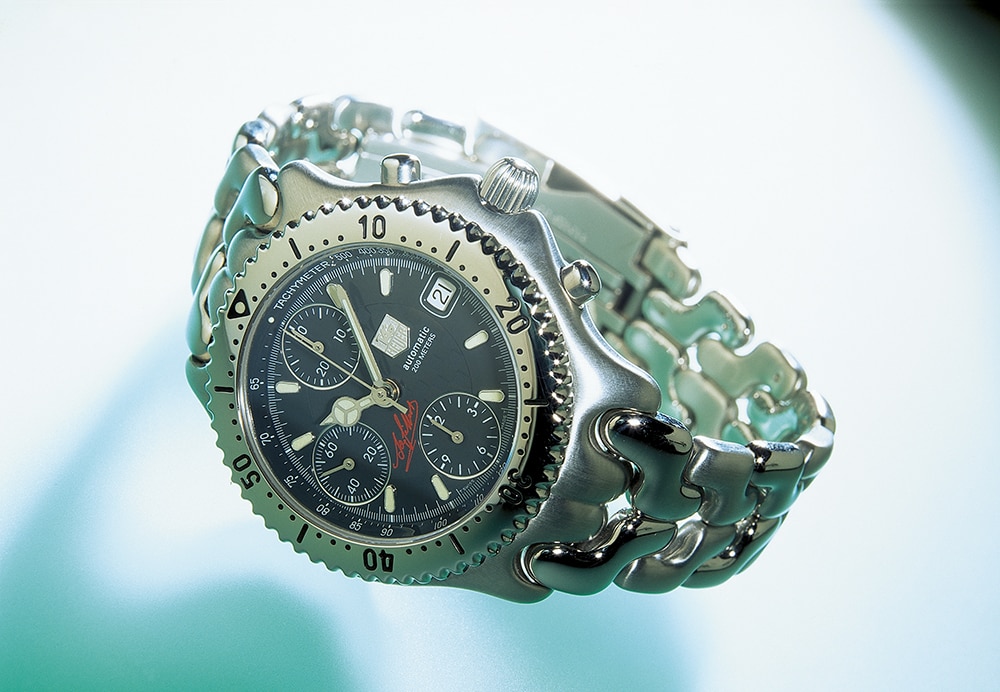
Another Special Edition of the S/el was the Jo Siffert edition, produced in 1996 to mark the 25th anniversary of the death of the Swiss Formula One hero. It was Jo Siffert who first placed the Heuer logo on his car, in the late 1960s, and he is closely identified with the Heuer shield on his racing suit and a white-dialed version of the Autavia automatic chronograph on his wrist. The chronograph featured a dark dial, with Siffert’s autograph printed on the dial in red, and a tachymeter scale on the inner bezel. The Jo Siffert Special Edition used an automatic movement, and was limited to 200 pieces.
The text “Serie Limitee en Memorie de Jo Siffert” (Limited series in memory of Jo Siffert) is engraved on the back of the watch.
Moving away from motorsport a limited edition of the S/el (reference WI1111) made for Chris Dickson’s America’s Cup Challenge in 1996, 500 of which were produced.

